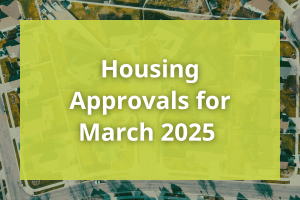Despite all of the noise about Australia’s slowing housing approvals, the extent of household indebtedness, the concerns about investor involvement, over-use of interest only loans and an explosion in apartment building, the reality is that Australia’s residential dwelling approvals remain high, totaling 203,647 for the year-ended November. Declining they may be, but approvals – and that means future building activity – have not stopped. The reason for the residual strength is Free-Standing houses.
As the first chart displays, the period from 2014 to 2017 saw total dwelling approvals rise substantially from the longer-term trend of something less than 200,000 approvals per annum. Total approvals are returning to that level, reaching 203,647 approvals for the year-ended November 2017.
Though much remarked upon, the chart places approvals of Flats of 4+ Storeys into their proper context. They have risen (by 166% since 2007), but at no time did they account for even close to half of all approvals.

To go straight to the dashboard and take a closer look at the data, click here.
Although not as remarkable as for their four storey and greater counterparts, the growth in Semi-Detached 2+ Storey approvals has been very strong. Annual approvals have almost doubled over the period. Totaling a solid (but still small) 24,061 separate dwellings, right now, it is these residences that experience the greatest growth.
In fact, as the chart below demonstrates, of the dwellings approved that are not free-standing or four or more storeys, it is the 2+ Storey Semi-Detached dwellings that are the only significantly growing housing volume. More importantly, there is a long-term structural reason why this dwelling format is coming into its own.
These are the urban infill dwellings that are in rows and groups, often on pre-loved and retired industrial sites, filling in former industrial buffers and generally making more efficient use of the available land, where land is most scarce. They have to be contrasted to their 4+ Storey cousins because they are far less prone to the vagaries of investment cycles and because, pleasingly, they deploy more wood and timber products throughout their construction and even their finish.

To go straight to the dashboard and take a closer look at the data, click here.
Good news though the 2+ Storey development is proving to be, we return to the main thesis in the certain knowledge that it is Free-standing houses that have, always, and will into the foreseeable future, dominate Australia’s dwelling landscape.
We can see this in the chart below, which rolls back to the year 2000, showing Free-standing dwelling approvals for the year-ended November (the bars) compared with the total for the same period (the line). Houses have come close to the red line of 50% at times, and crossed it for a month or two during the heady days of 2015 and 2016. However, they quickly recuperate their position, to the point where their dominance seems unassailable.

To go straight to the dashboard and take a closer look at the data, click here.
Indeed, for the year-ended November 2017, Free-Standing dwelling approvals totaled 109,280, accounting for 53.7% of total approvals, up 2.3% on the prior corresponding period. Although total approvals are down, the resilience of the Free-Standing house – and the data associated with those approvals – is a far more important basis for business decision-making, at least for those supplying the housing sector.



